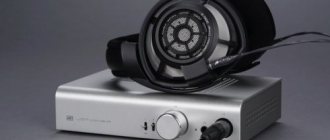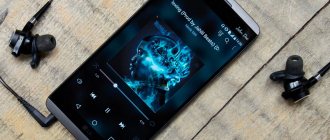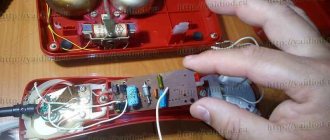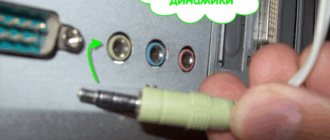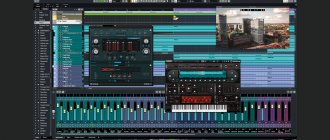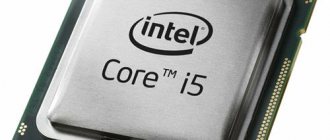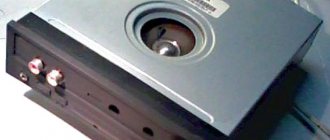ASUS Xonar DG
Our rating opens with an inexpensive Asus model with three analog connectors and one microphone input. There is an optical output. Oddly enough, the characteristics are enough for most users. The Xonar DG sound card features a built-in headphone amplifier, Dolby Headphone 5.1 technology, and an exclusive GX 2.5 audio effects processor. All this provides clear, detailed sound with precise positioning of sound sources in space, which makes the Xonar DG a pretty good card for gamers. There are 3 amplification modes for different applications: VoIP mode is necessary for voice communication over the network. The gaming one improves the spatial positioning of sound sources, and the musical one provides more powerful bass and depth of the sound stage. The model has a built-in C-Media CMI8786 processor, the maximum ADC frequency is 96 kHz, the ADC capacity is 24 bits.
Advantages:
- Low price.
- Quick installation.
- Built-in headphone amplifier.
- 3 gain modes.
- There is an optical output.
Flaws:
- Native drivers are installed crookedly on the computer.
- No Linux support.
- The built-in amplifier only works for headphones connected at the rear.
Not a bad budget sound card from Asus. For the average user who doesn't expect any special audio effects but wants good sound, this is a very good option. I would like to note the built-in headphone amplifier with Dolby Headphone 5.1 technology: it really significantly improves the sound quality. When installing drivers from a disk, users start having problems due to low-quality drivers, so I advise you to download them from the official website. Price - 2280 rubles. On the Yandex portal. Market 78% of buyers recommend this product.
The best sound cards with an additional unit
These are the same internal cards, but with the ability to connect external devices to them and with convenient configuration without the need to go into the system unit.
ASUS Strix Raid DLX
5
★★★★★
editorial assessment
97%
buyers recommend this product
A professional model for eSports is installed on the computer motherboard in a free PCI-E expansion slot. It is equipped with an external module, thanks to which you can easily adjust its settings.
The card is assembled from high-quality components that provide 24-bit audio, a frequency of 192 kHz, and a signal-to-noise ratio (DAC/ADC) of 124 and 117 dB. But the main pride of the model is the built-in headphone amplifier, which will allow you to connect devices with an impedance of 600 Ohms.
Pros:
- Crystal clear sound.
- Sonic Studio software package for complete sound control.
- Raid mode, which stores game sound settings in memory.
- ASUS Sonic Radar Pro technology, visualizing sound (for shooters like CS:GO, PUBG, etc.).
- High quality headphone amplifier.
- Hyper Grounding technology protects against interference and interference.
- Stylish eSports design.
Minuses:
- At first, there may be problems with setup and programs.
This model is aimed primarily at e-sportsmen. The sound visualization function is comparable to a serious cheat - only legal. At the same time, the clarity and volume of sound (especially with headphones) is ideal for any task.
E-MU 1616M PCI
4.9
★★★★★
editorial assessment
95%
buyers recommend this product
The pride of this model is its 16 output and 16 input channels, which will allow you to work with various musical instruments at a professional level. In addition, the card has coaxial and optical input and output for S/PDIF and 4 midi interfaces.
The device’s compatibility with AES/EBU, ASIO v2.0, ADAT, as well as external synchronization is also pleasing. Noise indicators, frequency and bit depth are at a high level, which guarantees clean, loud and clear sound of the reproduced material.
Pros:
- Amazing sound quality.
- A huge number of input and output channels.
- Availability of smart programs.
- Highest build quality.
- Reduced load on the PC processor.
- Compact and convenient external unit.
- Possibility of connection to a laptop.
Minuses:
- Cost – 26,000 rubles.
- When using PowerFX as a VST, 2 ASIO channels disappear from the general stream.
E-MU is designed for true professional musicians. Thanks to the sound quality offered, multi-channel operation and the richest potential, you can create real masterpieces with this card.
Creative X-Fi Surround 5.1 Pro
The Sound Blaster X-Fi Surround 5.1 Pro external sound card turns your PC or laptop into an entertainment system with SBX Pro Studio technology and a remote control. The board is easily installed via a USB 2.0 connection. Instead of low-quality built-in audio components, you get superior connectivity, using a remote control with buttons to mute, adjust volume, and control music playback. High-quality gold-plated stereo RCA and optical digital output for superior sound reproduction, conveniently located headphone and microphone jacks for online chatting. SBX Pro Studio technology is designed specifically to deliver great sound. With Dolby Digital Live technology, you can connect a decoder with one cable to play sound from any source. The maximum ADC frequency is 96 kHz, the DAC capacity is 24 bits.
Advantages:
- Possibility to get 5.1 sound.
- SBX Pro Studio technology.
- Dolby Digital Live technology.
- Good sound with good highs and mids, tight bass.
- Remote control.
- Convenient and intuitive interface of Audio Control Panel.
Flaws:
- Problematic software.
- There is no support for the Russian language.
- The device can respond to other IR remote controls in your home.
- The software loads the system quite heavily, the card is for more powerful system units.
A popular external sound card that will allow you to get sound like using a 5.1 system - this is its key difference from the ASUS Xonar DG. When using all these new built-in technologies, the output is high-quality sound with an acceptable level of bass. But this sound card is not suitable for older PCs: after installation, it overloads the system, so your computer will slow down a lot. It, like the ASUS Xonar DG, has problems with the quality of drivers, but it is easier to set up thanks to the convenient interface in the Audio Control Panel. Price - 3950 rubles. On the Yandex portal. Market 80% of buyers recommend this product.
Which sound card is better to buy?
Sound cards are available external and internal. The former are used mainly with laptops or tablets and are connected via a USB port. Internal ones are installed on the motherboard in a free expansion slot. The number of outputs of the card itself determines how many devices can be connected to the computer through it.
The format or number of channels of the card is what makes the sound more spacious and full. There can be only 2 channels or 6 (5.1 surround sound system) and 8 (7.1 system).
Bit depth and frequency directly “speak” about the quality of playback. The higher these indicators, the better the sound. The device bit size can be 16 bits, 24 bits and 32 bits, frequency – from 44.1 to 352.8 kHz.
Signal to Noise Ratio (dB) is the amount a sound card adds to a signal during playback. The higher it is, the better. A good model should provide at least 75 dB, an average one should provide about 90 dB. The best cards output 125 dB and above.
Useful additional features include the following:
- 3D sound support;
- ASIO, which reduces playback latency;
- EAX, which creates an environment model (it also requires OpenAL).
Each of these programs will provide the opportunity to experiment with the outgoing sound.
Recommendations: 12 Best Portable Computer Speakers
17 Best Computer Speaker Systems
20 best speaker systems
BEHRINGER U-PHORIA UMC202HD
Behringer U-Phoria UMC202HD is a small desktop card that provides compatibility between analog devices for recording and processing audio and a personal computer without a professional sound card with specific audio connectors. Like all converters in the series, U-PHORIA UMC202 works with high quality sound. Card with two XLR microphone inputs combined with ¼-inch TRS instrument connectors. For each of them, the control panel has a section with control elements - a rotary sensitivity controller, a linear/Hi-Z mode switch for the TRS connector and a Pad switch. The channel sections contain LED indicators that indicate the activity of the input signal at the connector and the occurrence of clipping. The main section of the panel contains a ¼-inch headphone jack, a volume control for the output signal fed to it, and a direct monitoring mode switch in which the input signal is sent to the headphones. In the same section there is a signal volume control on the output connectors, power indicators and +48 V phantom power on microphone inputs. Sound recording and playback is provided in resolutions up to 24 bit/192 kHz. This model is compatible with popular recording software including Ableton Live, Avid Pro Tools and Steinberg Cubase. Like Creative X-Fi Surround 5.1 Pro, the UMC202HD card connects via a standard USB 2.0 connector.
Advantages:
- Record and playback audio in resolutions up to 24 bit/192 kHz.
- Convenient, easy to use.
- There is a direct monitoring button.
- Supports ASIO driver.
- There is 48V phantom power.
Flaws:
- When recording music, faint noise is heard.
- If your PC is weak, then when recording vocals, clicks are periodically heard.
- The driver crashes from time to time and you have to reinstall it.
- There is no On/Off button. To disable, you need to disconnect the USB.
A good model for musicians who are starting to record their music and songs at home. Works great with popular recording programs, such as Ableton Live, Avid Pro Tools. The two previous samples cannot boast of this. But uninterrupted operation will be ensured only on a good modern PC. If you have an old PC, you will hear clicks and noises when recording music. From time to time the driver crashes and you have to reinstall it again. There are no complaints about the sound quality, it is at a high level. Price - 4800 rubles. On the Yandex portal. Market 87% of buyers recommend this product.
Computer for Hi-Fi, part 2: what do you need to have for high-quality sound reproduction?
In this part we will talk about the actual sound component: sound cards (or audio interfaces
) and DACs.
Save and read later -
This is a continuation. Read the beginning in the previous part.
DAC
An external digital-to-analog converter (DAC, Digital-to-Analog Converter), connected via a digital input, allows you to solve the problem of low sound quality of the solution built into the motherboard. Connecting a DAC allows you to “bypass” the computer electronics responsible for converting and processing the music signal. And the best option would be a USB connection to completely eliminate the use of a standard sound card.
In our assortment you can find a large number of external digital-to-analog converters: for example, the Atoll DAC 100SE model offers 3 coaxial, 3 optical inputs and a USB port that allow you to connect several audio sources. USB supports modes up to 24 bit/96 kHz.
A more budget-friendly option could be, for example, the Pro-Ject DAC Box TV or Cambridge Audio DacMagic 100 DACs: they also have the necessary optical input that you can connect to your computer, and the model from Cambridge Audio also has a USB input that supports asynchronous transmission of digital stream up to 24 bit/192 kHz.
The DAC is connected to the computer using the USB cable that comes with the kit, but if you wish, you can choose one of the cables specially designed for audio equipment, which can be found in abundance in our assortment: for example, ADL by Furutech, made using silver-plated oxygen-free copper and with demagnetized conductors, as well as triple shielding for protection against interference.
By the way, there is an opinion that the quality of the USB cable does not affect the sound quality. In order not to argue, we offer to take a high-quality USB cable home completely free of charge and check its effect on the sound yourself.
Audio interface (sound card)
This universal term refers to both external and internal solutions for input/output and audio processing. Sound cards, unlike DACs, are more focused not only on listening to music, but also on creating it, not to mention a wider range of applications and multimedia functions (games, movie voice telephony, etc.). What types of sound cards are there today based on the types of connections and sound processing?
…Today, even the cheapest built-in multimedia solutions can reproduce sound in 5.1 and higher format. Such sound cards, as a rule, are not distinguished by high quality stereo sound reproduction: they are intended rather for outputting system sounds, watching movies on a PC, and for games in which it is especially important to have a full-fledged surround sound image.
As a rule, a multimedia sound card offers from five to seven outputs with 3.5” mini-Jack connectors, into which a microphone and speakers are connected, and there is also a line input. Another disadvantage of multimedia sound cards is that they often use software or hardware (often non-disabled) sound “improvers” (or “improvers”, as they are also called), which make the already not the best sound even worse.
Higher quality solutions have coaxial and optical inputs and outputs on board, and the “consumer” mini-jack is not used even for headphone output. Unlike DACs, professional external audio interfaces can offer not only several inputs/outputs (including line, XLR and microphone), but also additional hardware for adjusting their parameters, including headphone outputs (for example, the Lexicon IO22 interface).
Finally, the external audio interface is as isolated as possible from interference inside the computer. Internal solutions (sound cards themselves) usually benefit in price, but when buying such a card, you must ensure a minimum amount of interference and extraneous noise inside. For example, by isolating the board as much as possible from other boards inside and installing low-noise fans for the case, processor and video card (you can read more about this in the first part of our “Computer for Hi-Fi” series). Some manufacturers of internal sound cards produce them with protection from some interference in the form of a casing, but this does not negate the recommendations of this paragraph.
External audio interfaces are usually connected via USB, Firewire or optical output: today the sound quality transmitted over the first two is not much different from each other. For Firewire, you need to buy a special PCI card, since this connector is usually not built into most motherboards; it is found mainly in top models.
As for the optical connection, unlike the “traditional” one, it is not subject to interference (because there is simply none), unlike a connection via conventional wires. But since not all acoustics (and then mostly professional ones - for example, studio monitors) and not every audio interface have optical inputs and outputs, this method of communication can be considered rather as a pleasant bonus.
By the way, external solutions are usually also considered mobile - but no one forbids using them on a desktop PC, and this is even encouraged.
In addition to connectivity, external and internal sound cards differ in the number and type of inputs and outputs: these can be a pair of RCA inputs and outputs, additional inputs for a microphone (with or without phantom power, amplifier), instrument inputs and digital. Starter options are offered with a single pair of inputs and outputs, such as the PreSonus AudioBox USB model, which supports parameters up to 24-bit/48kHz.
If you are interested in higher sound quality and a larger number of inputs, it makes sense to pay attention to the TASCAM US-1200 sound card with support for six analog inputs, 24-bit resolution and a maximum DAC sampling rate of 96 kHz.
Professional studio internal sound cards are also presented in our catalog: these are solutions from RME, a well-known manufacturer of similar equipment intended for studios. RME cards are made for use with an external I/O interface, so they are not suitable for multimedia purposes.
Finally, we would like to warn you against purchasing very old sound interfaces, both external and internal (10 years old or more). This is associated with both the risk of the manufacturer ceasing support for this product and the release of new drivers for new operating systems, and with their not entirely comfortable use, taking into account the increased requirements of users today. For example, some of them allow themselves to be used in only one application at a time - which cannot be called convenient.
Amplifiers with USB port
Relatively new solutions for obtaining high-quality sound from a PC are stereo amplifiers that have a USB port for connecting to a computer. They typically use a universal, high-quality USB DAC chip that provides both data acquisition and digital-to-analog conversion. Thanks to this, there is no need either to purchase a separate DAC or additional wires for connecting home speakers: you just need to connect such an amplifier to a computer with a high-quality USB cable specifically designed for transmitting audio data.
Among such models, we can highlight, for example, Atoll IN 400: a stereo amplifier for truly powerful floor acoustics. In addition to its excellent characteristics, it can easily serve as a full-fledged USB interface for a PC without the need for a separate external solution. A more modest option is the Denon PMA-50 stereo amplifier. In addition to the USB port, this model offers a Bluetooth wireless connection with support for the aptX Low Latency codec, which allows you to transfer audio data with minimal latency, and sound from a source (computer, tablet, smartphone, etc.) can be broadcast at speeds up to 352 KB/s
In the next, final part, we will talk about players for playing audio files and various small tricks that will help you achieve high quality sound.
This article has been read 111,871 times.
The article is included in the sections:
How to choose. Buyer's Guide
Creative Omni Surround 5.1
Another Creative model that easily connects via USB and makes your computer sound as realistic as in a movie theater. This sound card uses SBX Pro Studio technology to instantly transform your computer into a 5.1 entertainment system with surround sound, precise positioning, and additional customizable sound effects thanks to the Sound Blaster Omni control panel. Sound Blaster Omni is suitable for voice communication with a built-in dual microphone that uses CrystalVoice, a technology that enables remote voice reception without a headset by enhancing the sensitivity of microphones in the frequency range of the user's voice and reducing noise levels outside this range.
This technology is not available in Creative X-Fi Surround 5.1 Pro. And for those who love high-quality audio, the Omni card is equipped with a 600-ohm headphone amplifier for studio-quality playback. The Sound Blaster Omni Surround 5.1 card, like the Creative X-Fi Surround 5.1 Pro, uses Dolby Digital Live, an advanced audio processing technology that delivers discrete 5.1-channel surround sound for digital entertainment systems over a single digital cable. For video game fans, Scout mode technology will allow you to hear enemies from afar, giving you a tactical advantage in battle. The ergonomics are decent, with a high-quality gold-plated stereo RCA connector and an optical digital output for the best sound reproduction, conveniently located headphone and microphone jacks - all this will be at your fingertips.
Advantages:
- Beautiful view.
- Technologies SBX Pro Studio, CrystalVoice, Dolby Digital Live.
- For gamers - Scout mode.
- High quality sound through speakers or headphones.
Flaws:
- When I connect headphones, the speakers start to make noise.
- No Linux support, Windows only.
- The software installation is having problems.
- When headphones are connected, all other functions are disabled.
The card produces excellent sound both on speakers and headphones, but provided that the latter are of high quality. Like most models, this sample also has problems with the software: the software is difficult to configure and does not install the first time, but after installation the system will delight you with excellent sound and microphone quality. This is a very technological device when compared, for example, with the ASUS Xonar DG, which has practically no technology. Price - 5150 rubles. On the Yandex portal. Market 89% of buyers recommend this product.
Creative Sound Blaster Z
The Sound Blaster Z sound card is a representative of the line of high-performance Sound Blaster Z series cards with a PCI-Express interface. The model features SBX Pro Studio audio processing technology for realistic sound and stunning spatial sound effects through speakers or a headset. The device is equipped with a new high-performance Sound Core3D processor for processing sound and speech signals, accelerating work with sound and voice.
The manufacturer has developed a quad-core Sound Core3D sound processor to remove the burden of implementing SBX Pro, Studio Pro, CrystalVoice effects from the main PC processor. The gaming experience has been improved by increasing frame rates with significant improvements in audio and voice quality. The model supports Audio Stream Input/Output (ASIO) drivers, which make the Sound Blaster Z card an excellent solution for high-quality audio recording with low latency. A useful feature that is not present in previous models is the ability to switch the signal from headphones to the speaker system and back by simply pressing a switch. Dolby Digital Live and DTS Connect technologies - connection to a decoder or home theater is possible using one digital cable for 5.1 surround sound from any source. The package includes a microphone with variable beam width, which can be considered as a bonus.
Advantages:
- Lots of modern technologies.
- New Sound Core3D processor.
- ASIO driver support.
- Beautiful view.
- Switch the signal from the headphones to the speaker system by pressing the switch.
- Good output sound quality.
- Powerful headphone amplifier.
- Bright red backlight.
Flaws:
- High price.
- The backlight does not turn off.
- Clicking noises in the speakers when turning on/off/rebooting the computer.
- CrystalVoice doesn't work well.
For the money, this is a good model that is practically free of flaws. High-tech, it has its own processor built in to reduce the load on the PC processor. There is no such functionality in any of the named samples. There is support for ASIO drivers, a switch between speakers and headphones. I didn’t like the work of CrystalVoice: I was practically inaudible. I also don’t understand why the developers made such a bright red backlight (it can’t be turned off); when the lights are off, it illuminates the room quite strongly. Price - 7080 rubles. On the Yandex portal. Market 84% of buyers recommend this product.
Focusrite Scarlett Solo 3rd Gen
The model has a USB Type-C connection bus for faster data transfer and faster operation (compatible with USB 2.0/3.0). There is no such connection in any of the listed samples. Balanced TRS outputs effectively eliminate hiss and hum when connecting monitors with balanced inputs. The instrument input circuit for direct connection of a guitar or bass has been completely updated, 6 dB has been added at the input, so even when connecting guitars with active sensors there will be no overload. The Focusrite Scarlett Solo 3rd Gen features one new third generation preamplifier, offering up to 56dB of gain. It has a switchable Air mode, which emulates the technology of the same name used in the legendary ISA preamps. The interface supports sampling rate modes up to 24 bits (192 kHz). The model features independent gain controls that set the input signal levels. Connections include one XLR microphone input, TRS instrument input, headphone output, 2 TRS outputs for studio monitors, and a USB-C port. Solo 3rd Gen comes with the following software packages: Avid Pro Tools First, Ableton Live Lite, XLN Audio Addictive Keys, Softube Time and Tone Bundle, Focusrite Red Plug-in Suite, Redrite Focus 3 Plug.
Advantages:
- Beautiful view.
- Connection via USB Type-C.
- Balanced TRS outputs.
- Built-in 3rd generation preamplifier.
- A large set of programs included in the package.
Flaws:
- Very overpriced.
- When turned on there is a loud clicking sound in the speakers.
- Problems installing software.
The new generation of Focusrite Scarlett SOLO 3rd Gen sound card looks more interesting and attractive than the previous generation. The redesigned hardware has improved the parameters, and the new mode for emulating proprietary AIR preamplifiers distinguishes the interface from other budget cards. Taking into account the balanced outputs that have appeared, we can recommend them for sound recording and music creation in the home studio. The Focusrite Scarlett SOLO 3rd Gen features enough capabilities for use with inexpensive microphones and entry-level studio monitors. But the price is clearly too high. I would recommend, for example, the Creative Sound Blaster Z, which is not inferior in capabilities and sound quality to the Focusrite Scarlett Solo 3rd Gen. Price - 9900 rubles. On the Yandex portal. Market 80% of buyers recommend this product.
The best external sound cards
These devices can significantly expand the functionality of any equipment in terms of working with sound.
IK Multimedia AX I/O
5
★★★★★
editorial assessment
98%
buyers recommend this product
The model connects to a computer or laptop via USB. Thanks to many optimization functions, the card occupies a leading position in audio recording quality in its group. IK Multimedia AX is equipped with 2 input and 5 output channels, and a separate connection slot for an amplifier allows you to adjust the impedance and simplify reamping. Convenience of working with the card is guaranteed by the chromatic tuner, which displays all the necessary information on the display.
Pros:
- Maximum bit depth and frequency (24 bit/192 kHz).
- Excellent dynamic range – 117 dB.
- 14 outputs for connected gadgets.
- Ability to switch between preamp modes.
- Suppresses extraneous noise both in the supply and output of the signal.
- Several control programs included.
- Works on any PC, regardless of OS.
Minuses:
- The cost is more than 23 thousand.
- Difficulty in installing all programs and plugins.
The card is intended for audio recording and is addressed to professional musicians. It conveys sound as accurately and clearly as possible, and thanks to a set of programs, it opens up limitless editing possibilities.
M-Audio M-Track 8X4M
4.9
★★★★★
editorial assessment
96%
buyers recommend this product
The professional model from the new generation of sound cards has the latest design and interface (USB-C), a large number of connectors, inputs and outputs. It has an expectedly high operating frequency (192 kHz), 24-bit bit depth and a dynamic range of 113 dB. All this guarantees clear, loud and most realistic sound, as well as the absence of noise.
This gadget is complemented by a set of a dozen combining programs and a 2 GB sample library. The operation of the sound card is simple and clear - all buttons, knobs and connectors are labeled.
Pros:
- Easy to use.
- Stylish design.
- The purest sound and realistic voice transmission.
- Excellent programs for working with sound included.
- ASIO support.
- A large number of ports.
Minuses:
- The cost is almost 30 thousand.
- Minor problems when working with sound processing programs.
A high-quality, modern and productive sound card is suitable for people who work professionally with sound recording.
Steinberg UR22mkII
4.9
★★★★★
editorial assessment
93%
buyers recommend this product
The semi-professional card has a 24-bit resolution and a frequency of 192 kHz. The dynamic range ranges from 105-110 dB, so the sound quality and clarity will be excellent. The device is relatively inexpensive and does not have built-in sound effects, but they can be added from a PC or iPad without losing their purity. We are pleased with the microphone amplifiers from Yamaha, which not only pick up the signal from a long distance, but also transmit it as clearly as possible.
Pros:
- One of the best voice processing.
- Clear and loud sound.
- Compatible with many gadgets.
- A large number of connectors, inputs and outputs (12 pieces).
- ASIO v2.0 support.
- Combined microphone and line outputs.
- Metal body.
Minuses:
- Quite difficult to use, especially when installing plugins.
- You need a full Steinberg audio kit (microphone, headphones and the card itself), which is not cheap.
If you are an advanced musician who creates at home, this audio jack will be the perfect option for you. It’s better to buy it as a set - it will be more expensive, but it will provide impeccable sound quality.
Native Instruments Complete Audio 1
4.7
★★★★★
editorial assessment
86%
buyers recommend this product
The sound card is connected to the computer via a USB 2.0 port. It is equipped with 4 channels, 4 connectors and 2 headphone and microphone outputs. The good news is that the model supports ASIO. However, the pride of the device is the NJM 3414A current buffer, which significantly increases the volume and clarity of sound in headphones.
24-bit and 192 kHz sound ensure that the quality of the reproduced material is more than decent. This is facilitated by the 101-109 dB dynamic range.
Pros:
- Compact body.
- High quality reproduced sound.
- Improved headphone volume.
- The voice is conveyed as realistically as possible.
- Does not cause delays during sound recording.
- Good build quality.
- Relatively low cost - 8600 rubles.
Minuses:
- There is no firmware update available.
- Compatible only with the latest operating systems (macOS 10.12, Windows 10 and higher).
An excellent sound card that is ideal for beginning musicians. It offers compactness, no latency, and realistic and loud sound.
Orient AU-01PLW.
4.6
★★★★★
editorial assessment
84%
buyers recommend this product
The main advantage of this sound card is its compact size and extremely low cost. The model is not much different from a regular flash drive, but it works quite well with sound. It does not require additional power and connects via USB.
The bit depth and frequency do not produce sky-high indicators (16 bit/48 kHz), but this is enough for listening to music and high-quality playback in games. And support for virtual 3D sound makes the ultra-budget option even more attractive.
Pros:
- Easy to connect and operate.
- Compact sizes.
- High-quality reproduction – voice transmission is especially good.
- Availability of 3D sound function.
- Very low cost - 350 rubles.
Minuses:
- Small number of exits.
- Lack of any smart programs.
Orient AU-01PLW is one of the best portable models. It is convenient, compact, inexpensive and quite functional, so for general purposes it will be enough.
READ ALSO
10 best boomboxes
Creative AE-7
AE-7 allows anyone to experience the difference between the sound of a discrete audio chip and one built into the motherboard. The delivery set includes a sound card and an external control module - this is different from the listed boards. The control module is connected to the card, it is very convenient for them to change volume settings. The rear panel contains the following connectors: TOSLINK optical output, rear speaker output (3.5 mm), subwoofer output (3.5 mm), 1 microphone input (3.5 mm), headphone output (3.5 mm) and anterior (3.5 mm). The device has Dolby Digital Live and DTS Connect technology. In the Sound Blaster AE-7, the manufacturer upgrades the DAC by adding an ESS Saber 9018 amplifier, which increases the signal-to-noise ratio to 127 dB with a harmonic distortion coefficient of 0.0001%. The card itself comes with a full suite of audio enhancements, including customizable equalizers, sound profiles, and Surround, Crystalizer, Bass, Smart Volume, and Dialog Plus solutions that further enhance sound quality. There is a Scout Mode feature that gamers will appreciate.
Ultra-low output impedance of 1 ohm, supports studio headphones with impedance from 16 to 600 ohms, including high-end planar magnetic headphones. Clear, rich sound when playing in 32-bit/384 kHz PCM and DSD64 modes - the highest among the samples listed. There's new Sound Blaster Command software for additional audio customization, with a switch to quickly activate or deactivate audio processing effects. AE-7 sound card with a two-channel Xamp headphone amplifier that separately powers each earcup, from the first stage of amplification all the way to audio output.
Advantages:
- Plug-in external control module.
- Great sound, soft bass.
- User-friendly software.
- No noise when connecting/disconnecting headphones.
- Beautiful lighting.
- Added ESS Saber 9018 amplifier.
- Low output impedance.
Flaws:
- High price.
- The rear channel picks up interference from the video card. If you have a 5.1 system with a discrete video card, then you are guaranteed to experience interference.
- Sound recording is noisy and not of the highest quality.
I cannot call the Creative AE-7 a sound card that provides a fundamentally new level of sound quality for home systems. But we can recommend this sound card if you will record sound at the level of conversations in games or simple podcasts, but high-quality sound in headphones or on a home 5.1/7.1 system is important to you, the sound of which can be enjoyed thanks to Dolby Digital Live hardware encoding and DTS. For recording vocals and music, this device is not the best solution. At a price of 14,500 rubles, it is difficult to highlight any objective shortcomings, although the amount is considerable, but you would feel the difference in sound quality between the Creative AE-7 and ASUS Xonar DG from the first minutes. I would like to see better quality sound recording. On the Yandex portal. Market 83% of buyers recommend this product.
Roland Octa-Capture UA-1010
- Location: external
- Connection interface: USB Type-A
- ASIO support: v2.0
- DAC bit size: 24 bit
- Maximum sampling rate: 192 kHz
- Signal to noise ratio: 113 dB
- Microphone phantom power: yes
- Connectors: 1*mini-jack 3.5 mm, 8*jack 6.35 mm, 8*XLR, 2*S/P-DIF, 2*MIDI, 1*Hi-Z
Towards the end of the video, I’ll tell you about two cards in the pre-top segment. The first of these is the Roland Octa-Capture UA-1010. This is a professional mini-recording studio with a huge number of different interfaces. It must be said that musicians even use this model in live performances.
This audio interface works great with large projects without any delays. The recording quality will please even the most picky users. There are a number of built-in effects. The manufacturer regularly releases new drivers and keeps the device up to date. The number of inputs and outputs covers the needs of almost any user. Auto Sens function allows you to automatically adjust the optimal recording level of the input signal. Of course, top-end preamps are used here, in this case branded VS PREAMPS. The kit includes a rack mount. Users who are professionally involved in vocals and creating music content can safely purchase this model.

